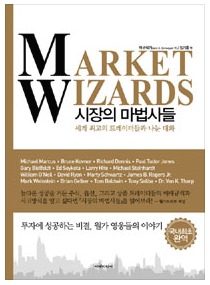Tomorrow will be my last day at Merrill Lynch. I want to sincerely thank my colleagues and clients for the opportunity to work with them. It is because of them that my 20 years at the firm have been so rewarding. As a last report, here are what I view as 10 of the most important investment guidelines I’ve learned in my time at the firm:
1. Income is as important as are capital gains. Because most investors ignore income opportunities, income may be more important than are capital gains.
-그렇기 때문에 직업을 가져야 되고, 현금 흐름을 창출해 벌어들여야 된다.
2. Most stock market indicators have never actually been tested. Most don’t work.
-시장 지표를 맹신하지 말라
3. Most investors’ time horizons are much too short. Statistics indicate that day trading is largely based on luck.
-단타를 하는 사람이 많기 때문에, 통계적 지표를 활용해도 대부분은 운에 맡겨 진다.
4. Bull markets are made of risk aversion and undervalued assets. They are not made of cheering and a rush to buy.
-활황은 오히려 위험 회피성향과 저 평가된 자선으로 만들어 진다. 단순히 사러 가려는 시장참여자들의 열성으로 구성되어 있지 않다.
5. Diversification doesn’t depend on the number of asset classes in a portfolio. Rather, it depends on the correlations between the asset classes in a portfolio.
-분산투자는 포트폴리오의 자산의 숫자에 영향을 받기 보다, 그 자산사이의 상관관계에 있다. 그러나 그 상관관계가 이성적으로 설명가능한 포트폴리오를 구성할 필요가 있다.
6. Balance sheets are generally more important than are income or cash flow statements..
- 재무상태표는 손익계산서나 현금흐름표보다 중요하다. 이 것은 그 기업의 역사를 보여준다.
7. Investors should focus strongly on GAAP accounting, and should pay little attention to “pro forma” or “unaudited” financial statements.
- 투자자는 일반회계원칙에 집중해야되고, 추정이나 검증되지 않은 재무제표를 적게 생각할 필요가 있다.
8. Investors should be providers of scarce capital. Return on capital is typically highest where capital is scarce.
-투자자는 부족한 자본에 대한 제공자가 되어야 된다. ROC는 대게 가장 높은 곳으로 투자된다.
9. Investors should research financial history as much as possible.
-투자자는 재무과거를 가능한한 연구해야된다.
10. Leverage gives the illusion of wealth. Saving is wealth.
-레버리지는 부의 허상을 나타내고, 저축은 진정한 부다.
'대가들의 한마디' 카테고리의 다른 글
| 현상보다 본질을 보자 (0) | 2013.09.19 |
|---|---|
| 20091105 - 영어 명언 100가지 (0) | 2013.08.25 |
| 좋아하고, 잘할 수 있는 일을하세요. 그러면서 다른 사람을 기쁘게 하세요.-혼다켄(출처 : 미래에셋 미디어 (0) | 2013.08.25 |




